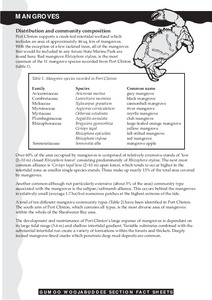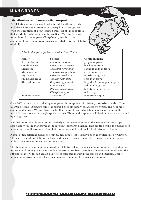Please use this identifier to cite or link to this item:
https://hdl.handle.net/11017/933Gumoo Woojabuddee Section Fact sheets: Mangroves

View this entry
Full metadata record
| DC Field | Value | Language |
|---|---|---|
| dc.coverage.spatial | Port Clinton | en |
| dc.date.accessioned | 2012-10-30T05:45:33Z | - |
| dc.date.available | 2012-10-30T05:45:33Z | - |
| dc.date.copyright | 1998 | en |
| dc.date.issued | 1998 | en-US |
| dc.identifier.uri | http://hdl.handle.net/11017/933 | - |
| dc.description.abstract | Port Clinton supports a creek-fed intertidal wetland which includes an area of approximately 46 sq. km of mangroves. With the exception of a few isolated trees, all of the mangroves that would be included in any future State Marine Park are found here. Red mangrove Rhizophora stylosa, is the most common of the 11 mangrove species recorded from Port Clinton | en |
| dc.publisher | Great Barrier Reef Marine Park Authority | en |
| dc.relation.ispartofseries | Gumoo Woojabuddee Section Fact sheets | en |
| dc.title | Gumoo Woojabuddee Section Fact sheets: Mangroves | en |
| dc.type | Brochure | * |
| dc.subject.asfa | Mangroves | en |
| dc.format.pages | 3 | en |
| dc.contributor.corpauthor | Great Barrier Reef Marine Park Authority | en |
| dc.subject.apais | Ecology | en |
| dc.subject.apais | Conservation (Natural resources) | en |
| dc.publisher.place | Townsville | en |
| dc.subject.collection | People and the Reef | en |
| dc.relation.connectiontogbrmpa | GBRMPA published this item | en |
| dc.subject.category | Plants | en |
| dc.subject.category | Ecosystems | en |
| dc.keywords | mangroves | en |
| Appears in Collections: | Community | |
Files in This Item:
| File | Description | Size | Format | |
|---|---|---|---|---|
| mangroves.pdf | 610.65 kB | Adobe PDF |  View/Open |
Items in the ELibrary are protected by copyright, with all rights reserved, unless otherwise indicated.
